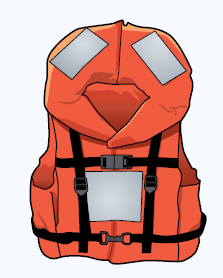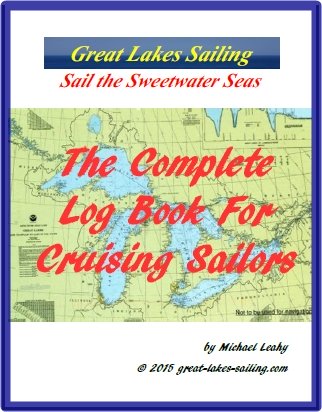SAILING SAFETY MEANS CREW SAFETY
Sailing safety begins with the Master – you. Poor leadership can result in serious problems and tragedies. You need to be competent in the operation of your boat and her equipment and have the skills necessary to sail her and navigate her. These skills can be learned and improved with courses taken from a sailing/boating organization such as the US or Canadian Power and Sail Squadrons, your local Coast Guard Auxiliary if they offer them or a local yacht club. Sailing education should be a life-long process.
You also need to have or develop the skills to lead others on board to carry out the tasks or behaviours that you need done. I am sure most of us have at some time seen boats coming into harbour with a couple engaged in a screaming match about how to dock – that is NOT a good example of leadership. Controlled tone and volume of voice along with clear, directed commands are signs of good leadership.
When crew are coming aboard (whether a partner, family or occasional guests), it is essential that they have proper kit. They may not instinctively know, so it is important to tell them. Some Masters keep a quick checklist handy to ensure nothing is left out – such as no black-soled shoes! (Also ask that they bring things in a duffel bag as hard suitcases can be hard to store.) Depending on the duration of the cruise, kit should include a change of clothing in the event a person gets soaked, a heavier sweater as it can get chilly out on the water, a rain jacket, sunglasses and a hat for protection from the sun. Sunscreen is important.
If
a person requires medication, they should have a sufficient supply in the
event of delays in returning to dock. Longer cruises would require basic personal care items as well.
Sailing safety can be enhanced by developing a set of SOP's – Standard Operating Procedures. And stick with them. It will be you who will be held to account in any mishap. Some examples could include:
- no children on the foredeck - ever
- children must wear PFD's
- non-swimmers wear PFD's while underway whenever on deck outside the cockpit
- galley must be ALWAYS attended if stove is lit
- PFD's worn in rough weather and at night
- safety harnesses worn at night
- helmsman and any crew in cockpit or on deck clipped on at night
- nothing goes into the head that hasn't been eaten or drunk.
- when can alcohol be consumed (keep laws in mind here)
These are examples. Drawing up your own will make you address safety issues and plan for them.
Make
a pre-departure briefing part of your SOP's. Take people through the
boat and show them all areas. Show how the head works – they will
be too embarrassed to ask. Identify who will be in command if you are
incapacitated. Show how to use the VHF radio to call for assistance.
A good practice is to have a card beside the radio with the steps
clearly written out. Conduct a MOB drill – even if its just a
simulation, it will create a discussion about how the boat is maneuvered and how a person in the water can be retrieved onto the
boat. Show where fire extinguishers are located and how to operate
them in event of a fire. Talk about the dangers of lines that are
under tension and winches, the boom swinging in an accidental jibe
and the danger of having a foot or fingers in a bight in a line.
These are all part of the 'safety consciousness' mindset.
Sailing safety always includes a reference to weather. Talk about the weather and share the weather forecast with them, emphasizing that the weather and not a schedule will determine departure, course and return. If fog rolls in before departure, stay put. If a change of course is dictated by weather, then change course.
|
You can't talk about sailing safety and not talk about PFDs and lifejackets. Have people try on their PFD. Its good practice and then casually state that if people feel more comfortable leaving it on, no problem. This will generally deal with anyone feeling uncomfortable about wearing theirs. PFDs should be placed somewhere within easy reach – and never used as a cushion. |
 |
At the heart of sailing safety is managing risk. Make it clear that your primary consideration is safety. When all is said and done, you are the Master with all of the authority and responsibility that implies.
When your crew see the importance you place of sailing safety, they will feel much more confident and enjoy being on board that much more. And you will know you have done your best to ensure their safety.
Return from SAILING SAFETY to SAFETY
Check out our great deals on quality safety equipment
Name Brands Quality Products
Click the STORE button on the navigation bar
Join hundreds of fellow
sailors
Subscribe to Rhumb
Line for updates and new port reviews
Your e-mail address is secure.
It is used only
to send you
Rhumb Line
The Complete Log Book For Cruising Sailors
written by a sailor for sailors

a practical, easy-to-use yet thorough format to record all of the necessary information about your boat and any cruises you take – whether exploring home waters or voyaging to distant ports across the Great Lakes.
.
Click here for more details